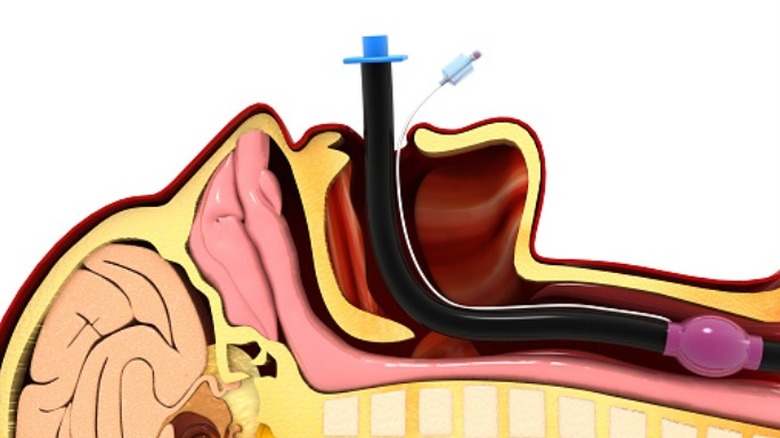What To Know About The Different Types Of Paralytic Drugs Used In Surgery
Surgery is an age-old medical practice that aims to treat disease, injury, and illness through the use of instruments and manual procedures (via Britannica). According to Johns Hopkins Medicine, the various reasons to have surgery include the treatment or relief of pain, to better a symptom, or even to locate a specific problem. For example, you may have surgery to remove a diseased organ, or to reset a broken bone. On the other hand, you could have surgery where your condition is further inspected with the goal of aiding a diagnosis.
During surgery, you may be given a certain type of medicine called anesthesia, which can help block sensations and pain during the procedure (via UCLA Health). There are 4 main types of anesthesia. During sedation, or "twilight," the patient is placed in a drowsy state to promote relaxation. Local anesthesia, such as a lidocaine injection, provides pain relief to the area that the surgery targets, like when the patient receives sutures for a cut. Regional anesthesia can prevent pain sensations in an entire area of the body via the injection of local anesthesia in a nerve cluster. A common example is the epidural used during childbirth. Finally, general anesthesia results in a complete loss of consciousness for a period of time and can cause drowsiness when you regain consciousness. One form of general anesthesia used to relax muscles during surgery is called paralytics. Here's everything you need to know about paralytics.
Types of paralytics
According to Aegis Anesthesia, paralytics are used during intubation and surgery to relax muscles and are only given to those that are already unconscious and are being kept under observation. Notably, at the end of the surgery certain drugs are given to reverse the effects of the paralytics. There are two main types of paralytics that can have shorter or longer acting effects.
For example, succinylcholine is a short-acting paralytic that is approved by the United States Food and Drug Administration (FDA) for use during intubation, surgery, and mechanical ventilation (via StatPearls). The paralytic has a quick onset and does not last very long, which is why it is recommended for use during emergencies that constitute urgent handling of the airway. It may result in side effects like apnea, high or low blood pressure, muscular pain after the surgery, rash, and a stiff jaw, reports MedicineNet.
Other longer acting paralytics include vecuronium, rocuronium, and cisatracurium — which aid in continued paralysis for lengthy surgical procedures (per Aegis Anesthesia). For example, vecuronium is an FDA approved paralytic that helps with intubation and relaxation during surgery (via StatPearls). Side effects can include hives, trouble breathing, swelling of the face, and weak muscles, says RxList.
Both succinylcholine and vecuronium are administered intravenously.


